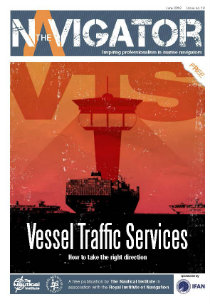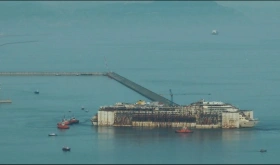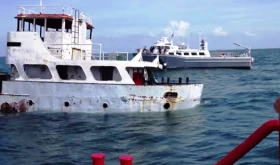In this short note the authors consider whether the entry of a ship into a pool can be regarded by financial investors (lessors and lenders) as a reasonable alternative to employment on time charter.
What are pooling arrangements?
Pooling arrangements have been around for many years and are used by ship-owners to optimize the return on their vessels in challenging spot market conditions. Owners have sought to aggregate with others to create pools of ships with similar specifications, age profiles and sector operations to offer a competitive product (i.e. a transport solution) that can provide better availability and positioning (and therefore time and cost benefits) to potential charterers.
The incentive for owners has been both the prospect that the revenues of a ship operated in a pooled fleet will out-perform those of that ship traded as a single unit in the spot market and the possibility that pooling would provide a mitigant against the risk of repetitive periods of off-hire (i.e. under-employment).
Why are pooling arrangements used?
Pooling has seen something of a return to grace over the past months as a response to both very challenging market conditions (both in terms of low freight rates and increased competition), increasing specialisation of tonnage and as an alternative (or as a first response) to corporate consolidations. There is a strong movement towards corporate consolidation in certain sectors and although the motivations for this vary there is often a common cause that is sited – the need to create owners that are of a size (in terms of capital) to be visible and relevant to the capital markets.
This movement is promoted by those owners that are already listed, want to be listed or have significant private equity investors as shareholders who are looking for a full or partial exit. For those ship-owners who are not immediately (or at all) interested in seeking outside public equity, pooling can provide a solution (of sorts) on an operational level to the issue of size and market relevance.
How do pooling arrangements work?
A pool will usually be managed by a specially established entity. The manager may be a wholly independent ship manager or an affiliate or subsidiary of a ship-owner. Most commonly the pool manager assumes the commercial management of the pool-entered ships. All of the technical management of a ship remains with its owner. Owners engage with the pool manager through a pool agreement and most usually also enter into time charters with the pool manager for the ships that are entered in the pool.
Those time charters may be for short (12 months) renewable periods and will be based on a standard document so that all owners/pool ships are subject to the same chartering terms and conditions. The pool manager then enters into voyage charters, time charters, contracts of affreightment or other contracts of employment (but not bareboat charters) with customers. Revenues are then pooled and allocated in accordance with the terms of the pool agreement.
Key features of pooling arrangements
A key feature of pools is that there is strong commercial commonality between the pooled vessels. For example, we see dedicated pools for capsize, suezmax, ultramax, handysize vessels and for chemical tanker etc. Assuming a ship has the basic characteristics that fit the profile of the pool, points will be awarded and it is these points that will then determine each ship’s share of the net earnings of all ships in the pool. The criteria for awarding pool points is not always set out in a transparent way and some pool agreements leave a good deal of discretion to the committee of the participants. Most usually the pool agreement state that the relevant committee will allocate or adjust points based essentially on performance characteristics (speed/consumption) of any entered ship and the time during which the ship has been in the pool during any accounting period with the intent that net earnings are distributed equitably.
Pool revenue sharing formulae also vary in their transparency but essentially look to take gross revenues of all pooled ships over a given period, net-off the costs (which might be both administrative costs and certain ship operations costs depending on the role of the pool manager) and commissions payable to the pool manager and divide the net balance between ships in the pool by reference to the pool points of each of the ships adjusted to reflect the average time of ships in the pool over the relevant period.
Owners who enter ships in a pool will generally also form part of a supervisory board that has oversight of, and discretion in relation to, such matters as admittance of additional ships from existing pool members, admittance of new pool members and the pool formulae. They will not have control over the pool manager itself (unless it is a purely captive entity) and so their sanction as regards management performance lies with the right to withdraw but they can influence pool performance by controlling admittance criteria, the size of the pool and enforcing the withdrawal of ships or participants that are negatively impacting average earnings.
Factors to consider in assessment of pooling arrangements
In assessing the quality of a pool and the predictability of each ship’s pool revenues financing parties will want to look at a number of key components:
(i) ship type (including age);
(ii) eligibility criteria;
(iii) the track record of the pool manager;
(iv) the names/quality of participating owners and their weight within the overall group;
(v) the size of the pool and its position in the market;
(vi) pool point and revenue allocation formulae;
(vii) fees, costs and commissions of the pool company or manager; and
(viii) entry and exit criteria and timing.
Notwithstanding that a pooled ship may be subject to a time charter and on average earn revenues which are better than it might earn trading alone (or in a smaller single owner controlled fleet) it is nonetheless operating in the spot market.
For those financial lessors/lenders that are not comfortable with that, pooling can only ever offer a partial response. Because pools operate in a collaborative way (as between owner participants) they ought to offer more reliable revenue earnings than ships that are operated through independent commercial managers who may be managing the ships of different owners who are in direct competition. In extreme market conditions we have seen that seemingly solid long term charters at excellent charter rates can come unstuck with ships being returned or rates being significantly reduced. In the vast majority of cases there is no way for a lessor/lender to insulate itself from market realities – but it can moderate some of the risks and the pooling of ships is certainly a model that has shown (in the hands of the right pool manager and owners with similar motivations) that it can work to the advantage of all.
Final note
One final point for financial lessors and banks to note. Pool agreements will usually limit the ability of a participant to assign its rights but they should not prevent an assignment in favour of a financial lessor/lender of the right to receive the pool revenues allocated to any relevant ship. Rights to revenue arise by reason of both the pool agreement and the time charter and so, to be complete, the financial lessor/lender will also want to take an assignment of the participant’s rights under the associated time charter. Other usual security arrangements in favour of financial lessors/mortgagees – such assignments of insurances, subordination of charterer’s rights and subordination of manager’s rights/manager’s undertakings – ought, in principle, to be no more difficult to put in place with a pool structure than in the context of a classic arrangement involving a time charterer and an external manager.
It is possible that the pool manager/charterer will expect to receive an undertaking for quiet enjoyment in return. As noted, the lessor/mortgagee will not usually become entitled to exercise a participant’s rights under the pool agreement so it will not be able to force a withdrawal of a ship directly with the pool manager nor influence a participant’s discretions in the workings of the pool. These will be matters dealt with in positive and negative covenants in the lease/financing documents.
This article was initially posted in Berwin, Leighton, Paisner website and is reproduced here with their kind permission. Berwin, Leighton, Paisner (BLP) count among its clients over 50 Global Fortune 500 or FTSE 100 companies and over half of the world’s top 20 banks. With experience reaching across more than 70 legal disciplines and an international business that has doubled in the last five years, BLP provides legal expertise, business insight and value-added thinking to its customers.
ABOUT THE AUTHOR
 |
Nigel Ward joined BLP in early 2014 having spent his earlier career with Norton Rose Fulbright. He is qualified in England and France and has experience in shipping finance team credit restructurings and early Islamic finance structures and returned to London in 1989. |
 |
Marius Toime is project finance partner in BLP’s Singapore office with over 10 years’ experience in the Asia Pacific region. He specialises in cross border projects in the natural resources, infrastructure and shipping sectors. |
 |
Simon Spells is a Senior Associate in the Asset Finance department of BLP’s Singapore office. He has significant experience acting for financial institutions, lessors and operators in respect of a range of domestic and international asset and structured finance transactions across the shipping, offshore, aviation and rail sectors. |
 |
Ruby Leung is an Associate in our Finance practice. She focuses on asset finance, particularly in the shipping and aviation sectors. |














Leave a Comment